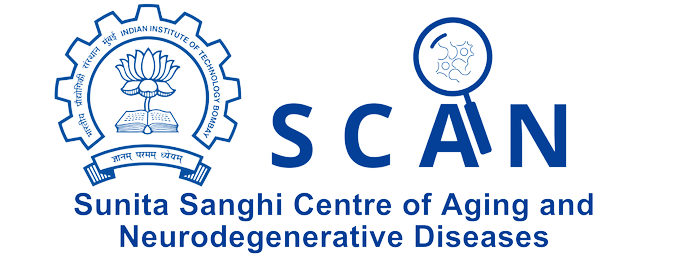Understanding the disease mechanisms
Neurodegenerative disorders are caused by multiple factors including an interplay of genetic, environmental, and age-related endogenous factors. Protein misfolding and subsequent amyloid aggregation are classical pathological mechanisms, which drive the onset and progression of various neurodegenerative disorders, including PD, AD, and FTD. Therefore, one of SCAN’s prime goals is to delineate the pathway(s) of protein aggregation associated with the above-mentioned diseases. The Centre will establish the structure-toxicity relationship of protein aggregates in a pathophysiological context. The various amyloidogenic proteins such as α-synuclein (related to PD), Amyloid-β and Tau (related to AD), TDP-43, and FUS (related to FTD) will also be emphasised. Primarily, these disease conditions will be simulated in a test tube to study protein aggregation and its implications in disease pathogenesis.
Recently, it was established that the aggregation of proteins nucleates through liquid-liquid phase separation (LLPS), proposing LLPS as an inherent phenomenon contributing to the pathology of many neurodegenerative diseases. Therefore, examining the phase behaviour of these proteins will be of significant interest in deciphering the disease mechanism. Further, SCAN will develop cell and animal models to study protein aggregation and amyloid formation associated with PD, AD, and FTD.
To create a patient-specific model, the Centre will use patient-derived iPSCs to develop a 3D cell culture model to understand the phenotypic manifestation of specific disease subtypes. The disease mechanisms/models will be further validated using various system biology approaches, omics, mathematical models, and AI/ML, which can assist clinicians in predicting disease prognosis and progression.
These approaches can further aid in screening a wide range of inhibitors/ small molecules, likely to inhibit amyloid aggregation. The Centre will also develop the structure-toxicity relationship of amyloids by solving its structure using multidimensional NMR, and CryoEM, along with various biophysical techniques and cell biology studies.
